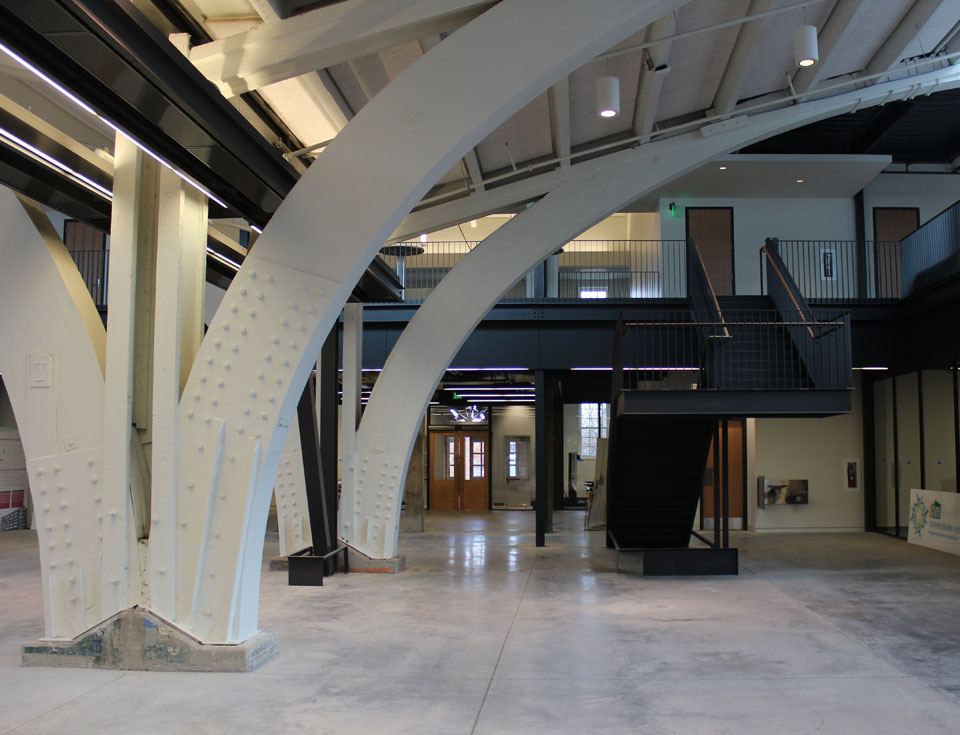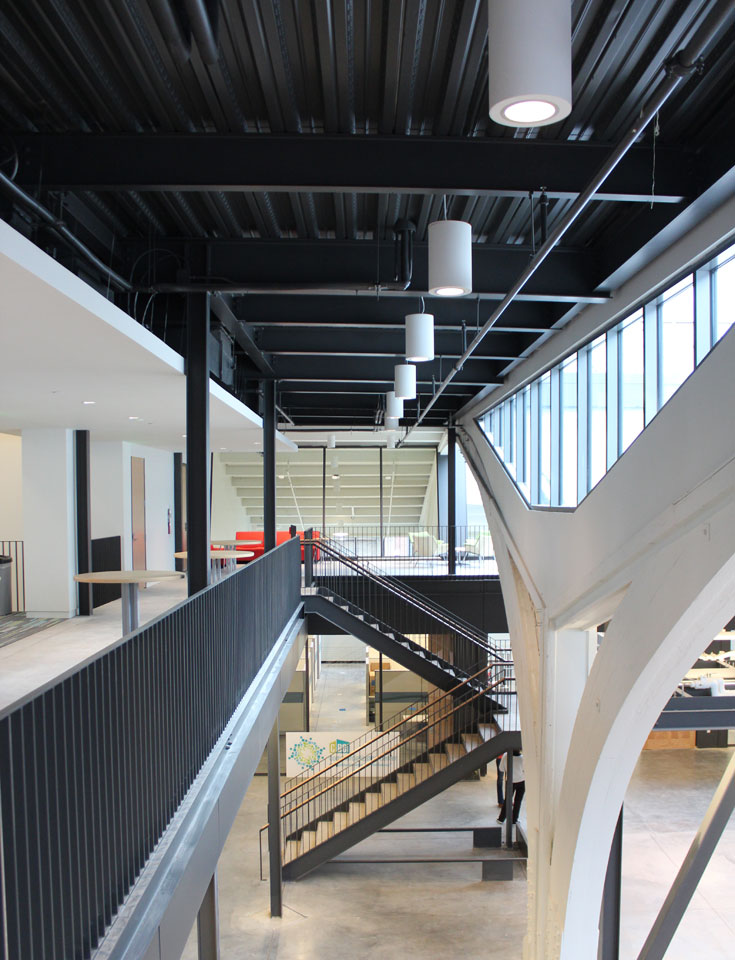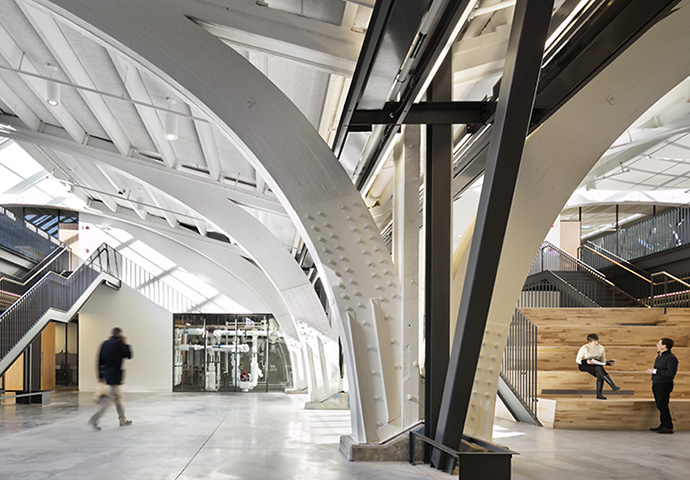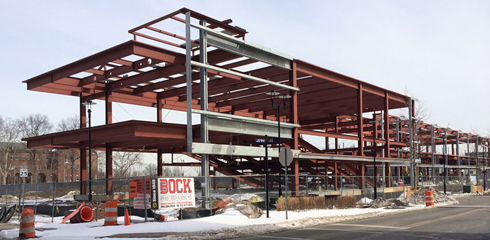HQ for Building Energy Research Nears Completion
At the Center for Building Energy Science and Engineering, the original wooden arches of this World War II-era building have been retained in the retrofit, and a new steel mezzanine rises within them.
The Consortium for Building Energy Innovation (CBEI)—formerly the Energy Efficient Buildings Hub—at the Philadelphia Navy Yard is a research initiative funded by the Department of Energy and led by Penn State University that seeks to reduce the energy usage of commercial buildings 20% by 2020.
At the retrofit project at Building 661, known as the Center for Building Energy Science and Engineering, work is almost complete on the comprehensive transformation of the former Navy recreational building (unoccupied since the late 1990s) into a facility that will welcome the public and educate visitors about energy-efficient building practices. Staff and researchers have begun moving into the workroom and offices. The ICon visualization lab—dedicated to facilitating the use of virtual reality techniques in design, construction, and other disciplines—has been installed, and the telepresence room recently held its inaugural Building Steering Committee session. During the renovation process, the exterior envelope of the building was completely refurbished, and large expanses of new glazing were introduced in concert with a pair of new and retrofitted skylights to suffuse the workroom interior with natural daylight, reducing lighting usage and energy loads. Per the CBEI mission, all building systems are completely visible, including the main mechanical room, passive and active chilled beams, a low velocity underfloor system, and a split system in offices. Installation of landscape, punch listing, and commissioning should be complete by the end of the year.
The new mezzanine provides informal gathering space and an architectural enclosure for the distribution of building systems, which will be visible from below.
Across the street, work continues on Building 7R, the Center for Building Energy Education and Innovation. On the exterior, the façades are almost complete, revealing the approach to the building's long north-south orientation. The south-facing brick screens provide passive solar shading for classrooms and offices while the north façade awaits the installation of 19-foot translucent panels that will enhance the thermal performance of the exterior envelope. As with Building 661, interior natural daylight is abundant, lessening reliance on artificial lighting and its related mechanical loads. At 7R, daylighting is facilitated by a south-facing roof monitor along with an almost completely glazed north wall. Additionally, the building's thin aspect ratio allows light and views from 12th Street through the building to the landscape and League Island Park beyond. The next several months will see the installation of the remaining exterior materials and interior finishes including the tiered lecture hall. Wireless sensors will be embedded in the green roof in order to monitor energy performance—one of the first monitoring programs of its kind in the country.






